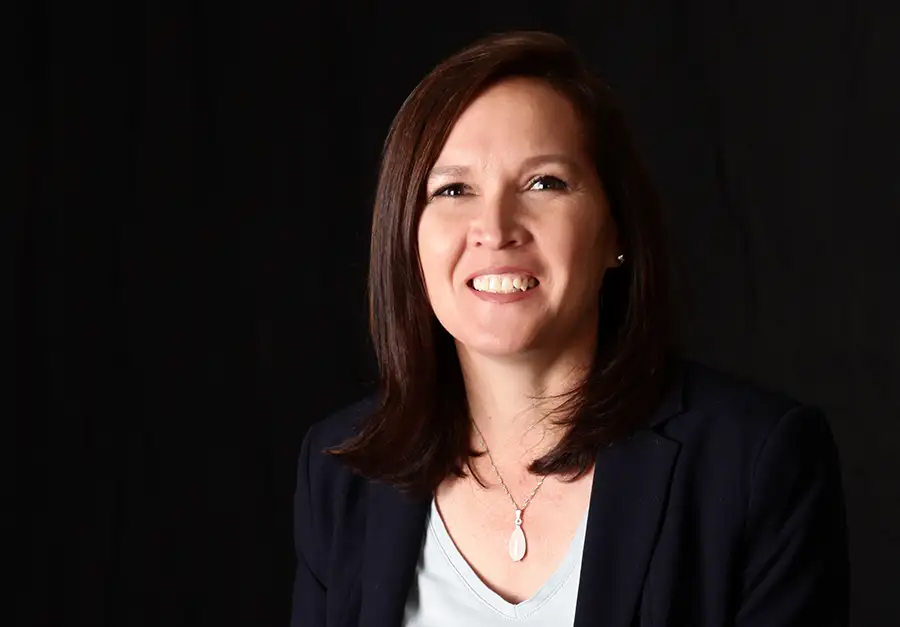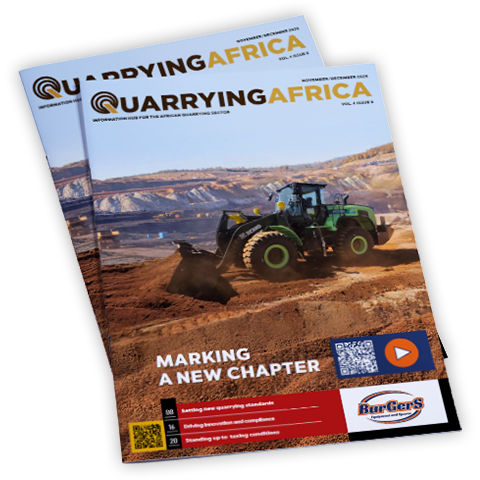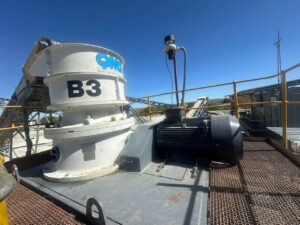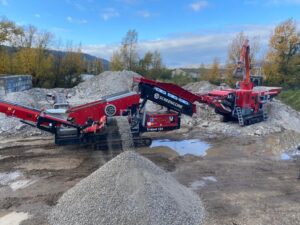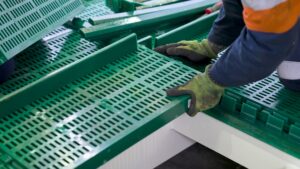A year ago, Van den Berg assumed her role as the director of ASPASA, the association for small-scale surface miners in South Africa. On her immediate to-do list was a range of pressing issues for the industry, including amplifying the voice of small-scale miners, re-engaging several key stakeholders and addressing compliance issues, amongst others.
“The first year has been a rollercoaster of learning and engagement with various stakeholders,” she says. “It has been an amazing learning curve for me personally, which has also presented the association with the right platforms of engagement to afford a voice to small-scale miners.”
Key milestones
The first year, she says, was largely about engagement and there were several successes achieved in that regard. Firstly, consultation with the legislator was of paramount significance. Van den Berg secured a one-on-one with the chief inspector of mines, a principal figure at the Department of Mineral Resources and Energy (DMRE), who has opened the door for the association to interact with the regulator on a regular basis.
In addition, ASPASA used last year to maximise engagement with its parent association, the Minerals Council South Africa. As part of that process, Van den Berg successfully held a meeting with the new CEO, Mzila Mthenjane. As a member of the Minerals Council, ASPASA seeks to leverage the organisation’s influence and resources to find lasting solutions for quarries and small-scale miners in general. The Minerals Council represents about 95% of mines in South Africa and is a leading voice when it comes to lobbying on behalf of the industry.
As part of the engagement process, ASPASA also met with Reginald Demana, the new CEO of the South African National Roads Agency Limited (SANRAL), a key stakeholder in the quarrying fraternity. Some of the key issues of discussions included quality of aggregates and areas of cooperation in the best interests of both organisations.
During Van den Berg’s first year, ASPASA managed to set up new networks, for example, with the Agricultural Business Chamber of South Africa (Agribiz), a voluntary, dynamic and influential association of agribusinesses operating in South and southern Africa. Given Agribiz’s track record in creating an environment in which agribusinesses of all sizes and in all sectors can thrive, expand and be competitive, ASPASA seeks to collaborate with like-minded organisations in the quest to advance the success of its own members.
“We also had a very good discussion on insurability of operations. On this platform, we demonstrated how our audit protocols can help mining operations be insurable at lower premiums. That discussion opened new doors at Santam, a leading insurer in South Africa, to engage our members and provide insurance that speaks directly to the needs of small-scale miners,” explains Van den Berg.
In 2023, ASPASA also secured two partners – Implats and AMSA – to help with training of Government Certificate of Competency (GCC)engineers. As part of the qualification process, GCC engineers need exposure to an underground mining environment, and the two mining companies have agreed to provide access to ASPASA members.
Joining forces with the Institute of Quarrying Southern Africa (IQSA) has paid dividends for the two associations and the industry at large, says Van den berg. For example, the two organisations have made significant headway in training. For instance, they have managed to map career paths for all key positions in the quarrying sector. Through a combined effort between IQSA and ASPASA, the next step is to link all career paths with the Mining Qualifications Authority (MQA) training to help members align their MQA training with a career path of their choice in the quarrying sector.
Another key milestone for Van den Berg was visiting all top performing mines across the country, taking a gift to every member of the operation. “It is important for us as the ASPASA to recognise those on the ground, the foot soldiers, who make it happen on a daily basis,” she says.
A major talking point during her first year was also the advances made in the Royalty Tax case. Over the years, payment of royalties has been a hotly contested issue among quarry owners and operators as to where the value of a mined product needs to be determined in order to calculate exact payments. The industry’s dispute with the South African Revenue Services (SARS) exists over the first point of sale at which the value of royalties needs to be calculated. The ‘taxman’ argues that royalties should be calculated from the stockpile, while the industry insists that it should be from the muckpile.
“The issue of Royalty Tax has been dragging on for years, making it costly for members. Official engagements started as far back as 2009. I am glad to announce that we have made significant headway – we have now applied for a court date in February this year and we are seeking a declaratory relief,” she says.
Van den Berg has also been successful in the quest to grow membership. Through collaborative efforts between herself, auditors and the Management Committee, ASPASA added four new producer members last year and a few associate members.

CPS update
Van Den Berg’s tenure at ASPASA coincided with the gazetting of the Collision Avoidance Systems (CAS) regulations by the DMRE in December 2022. She tells Quarrying Africa that some operations have already been issued with Section 54 orders for not implementing Level 9 technology, which she believes is too soon.
One of the concerns regarding the enforcement of the CAS regulations is the inconsistence between regions. Certain regions, explains Van den Berg, call for Level 9 implementation at all costs, while others follow the risk-based approach as per the legislation. These were some of the issues that ASPASA managed to raise with the chief inspector of mines.
“Let me put it on record that both the Minerals Council and ASPASA are for saving lives. One fatality or injury is too many. However, we ask the inspectorate to consider what risk assessments and hard controls have been put in place to protect lives at a mine. The regulation clearly states that if a mine has significant risk, it needs to reduce it. It can do that through traffic management, which can eliminate significant risk,” she says.
That said, Van den Berg says the quarrying sector must realise that the move towards new technology is gaining momentum. She calls on members of ASPASA to start engaging suppliers of CAS technology, which not only protects lives, but also helps reduce costs of operation and productivity.
“We must continuously look at our risk and investigate fitting technologies. Risk can be reduced through traffic management, but it is also advisable to look at cost-effective technologies that speak directly to the needs of an operation. We must also understand that apart from safety, technology helps us improve efficiencies and productivity on site,” she says.
Economic challenges
To help ease the burden of economic challenges for ASPASA members, Van den Berg implemented a levy structural change. Traditionally, ASPASA had a flat membership fee for associate members which did not differentiate between the size of operations. For example, a company with five people had to pay the same membership fee as an entity with 100 people. Members have been split into small, medium and large operations, and now pay a fee in line with their size category.
“Our producer members have always paid based on a rand per tonne structure, which in my view is still fair. When you are a small operation, obviously your tonnages are small and you pay accordingly, which I believe is a fair structure that we have maintained,” she says.
Apart from levies, ASPASA offers free information-sharing platforms for members. Leveraging its wide network, the association brings experts on board to impart knowledge on several subjects that affect the industry.

Focus areas
In her second year in charge, Van den Berg has set her sights on several focus areas. Chief among them is to improve internal engagement through the recent reorganisation of regions. Previously, she says, there were too many regional meetings. Regions have therefore been restructured in order to remedy the situation. The Western Cape has been combined with Northern Cape and Eastern Cape, while Gauteng and North West have been merged. Limpopo and Mpumalanga are now a single region, and so are KwaZulu Natal and the Free State.
“Previously, we had two health and safety as well as two environmental meetings. As part of a newly adopted structure, we are going to have four meetings a year, but we will combine both environmental and health and safety to make it more impactful,” she says.
This year, ASPASA will inaugurate its own annual one-day conference, which is scheduled to take place on October 31 at a venue yet to be confirmed. Under the theme, “The World of Quarrying in 2050”, this year’s conference will focus on the future of the industry in an everchanging world.
In terms of training, the association has identified areas of immediate attention across subjects, including health and safety, environmental and social compliance. In addition, change management, both from a strategic and operational perspective, will take centre stage this year.
ASPASA will also cast the spotlight on the Mine Health and Safety Council (MHSC) milestone reporting this year, which is related to a mine’s exposure to noise and dust as well as cultural transformation. If done correctly, mines can get up to a 10% discount on their MHSA levies. ASPASA is also on the MHSC board.
“In conclusion, we intend to automate our statistics this year. This initiative was on our radar last year, but we started the project very late in the year. We will also focus our efforts on helping members comply with blasting regulations, particularly the issue of blasting within 500 m of buildings, infrastructure and communities,” concludes Van den Berg.
